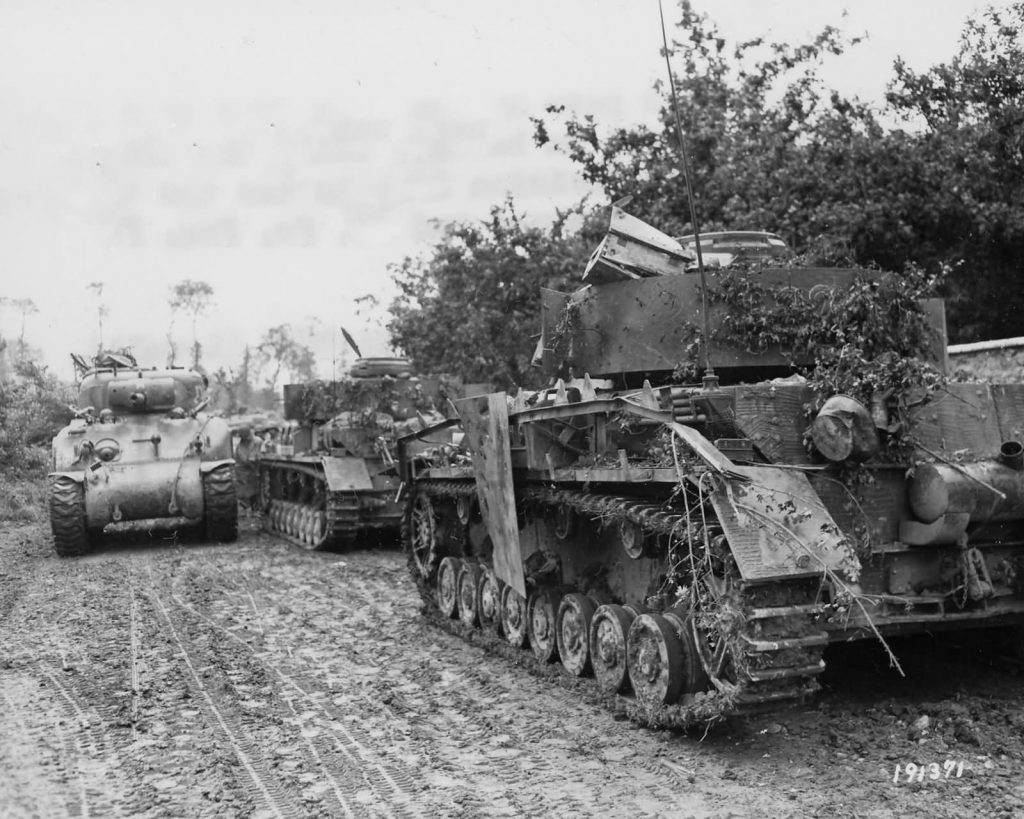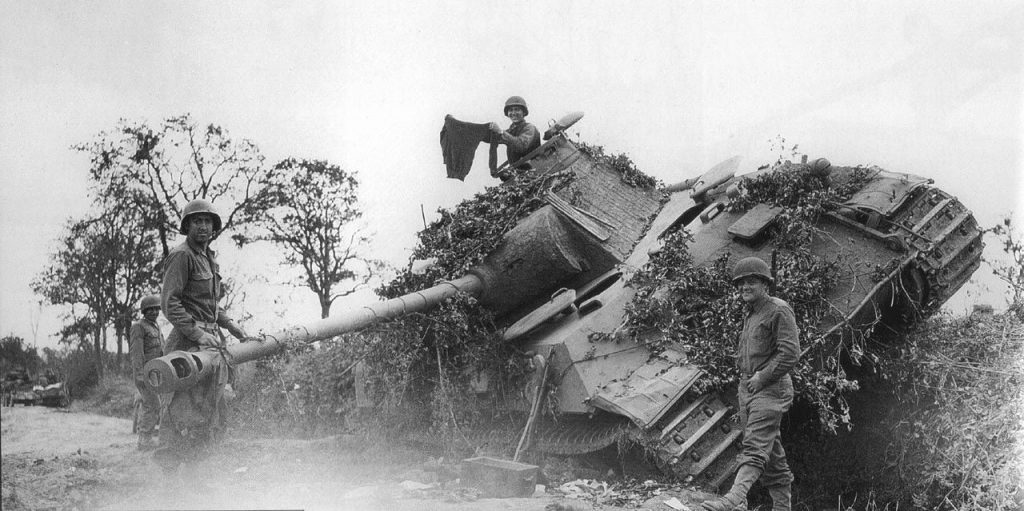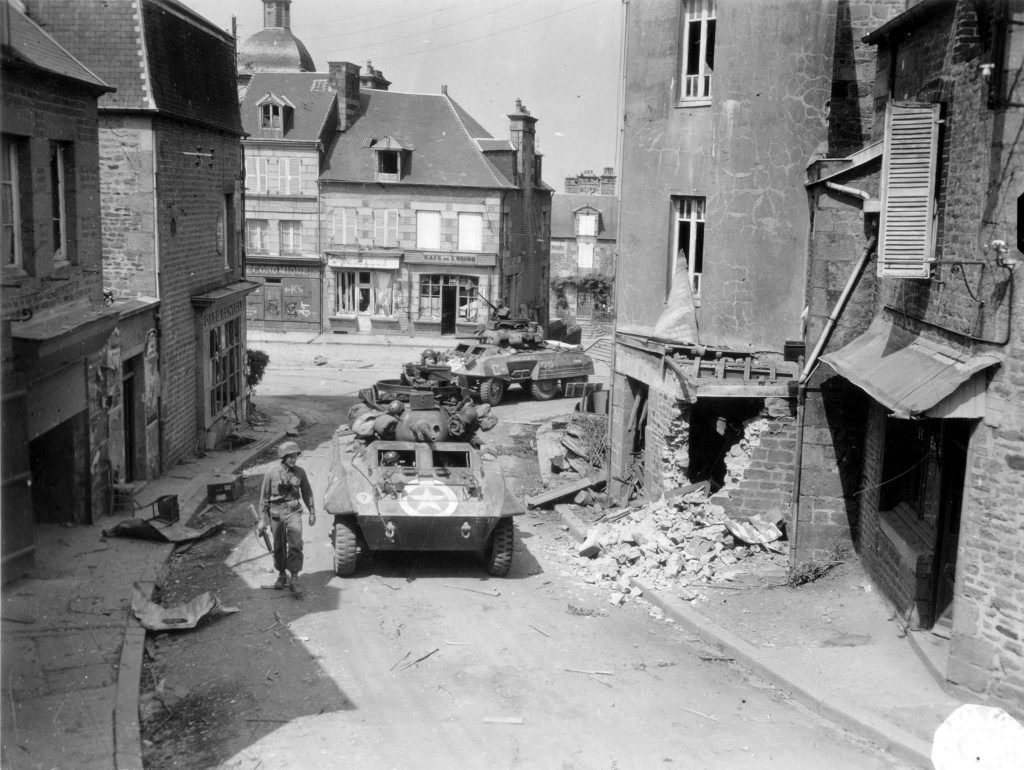Operation Cobra is the codename for an operation during World War II, planned and carried out by US Army General Omar Bradley, to break through the German front and move the war out of the geographic boundaries of the Normandy bridgehead captured during the Normandy operation and subsequent protracted battles. The operation led to great success for the allied forces: they inflicted irreparable losses on the German troops, creating the Falaise Pocket, and the Germans lost their positions in northwestern France.

Background
Having landed on the French coast in the Normandy region, the allied command was able to seize a bridgehead and deploy a significant number of troops and equipment there. However, the German command was able to create a solid front along the perimeter of the bridgehead and prevent its expansion, skillfully using the available means and terrain properties. The “bocages “planted by French peasants many years ago interfered with the advance of the allied troops. These embankments and hedges over hundreds of years turned into insurmountable obstacles even for tanks and were skillfully used by the Germans to hold back the enemy’s advance. In this situation, the allied command faced the problem of going beyond the bridgehead.
Description
The beginning and development of the operation
The staging area for the concentration of American troops before the breakthrough was the vicinity of the city of Saint-Lo, which they liberated on July 23 after fierce fighting. The breakthrough was to be carried out south of Saint Lo by the 7th Corps of the US 1st Army, supported by the 8th Corps. To break through the German defenses, the Americans used the support of heavy strategic bombers, and massive artillery shelling – more than 1,000 American divisional and corps artillery guns dropped more than 140,000 shells on the enemy. German positions on 25 July were carpet bombed by B-17 Flying Fortress and B-24 Liberator aircraft on a 7,000-yard (6,400 m) front. Further, fighter-bombers began to operate.
At the same time, as a result of unsatisfactory planning of the actions of the allied bomber aviation, 111 American soldiers were killed and 490 were wounded from “friendly fire”. But the losses of the Germans turned out to be much more difficult: the forward positions of the German troops near Saint-Lo were almost completely destroyed by the bombing. A gap was formed in the front, which the Germans did not have time to close, and through it on July 25, American troops, using their superiority in aviation, made a breakthrough southward in the area of the city of Avranches.

Building on success
Here, the allies were no longer in the way of the bocages as they were in the coastal regions of Normandy, and they could use their superiority in mobility in this open area. In an offensive on such a narrow sector of the front, the Americans deployed more than 2,000 armored vehicles (1269 medium tanks, 694 light tanks and 288 anti-tank self-propelled guns), which led to a rapid breakthrough from Normandy to the Brittany Peninsula and the Loire Country region.
On August 1, the 12th Allied Army Group was formed under the command of General Omar Bradley, and included the 1st and 3rd American armies. General Patton’s 3rd American Army made a breakthrough and in two weeks liberated the Brittany Peninsula, surrounded the German garrisons in the ports of Brest, Lorian and Saint-Nazaire. The 3rd Army reached the Loire River, reaching the city of Angers, captured the bridge over the Loire, and then headed east, where it reached the city of Argentan, and attacked the positions of the German Army Group B from the rear, that is, from the south, at that time how the Anglo-Canadian troops were advancing on it from the north, and the 1st American Army from the west.
Attempts by German counterattacks

Since the German front was broken through, Hitler, contrary to the opinion of the supreme commander in the west, Field Marshal Gunter von Kluge, who insisted on a systematic retreat to the German border, gave the order, according to which the gap made by the enemy in the Avranches area had to be closed with a counterattack. He considered it possible, by cutting off the breakthrough of the 3rd American Army, in this way to restore the front line. At the same time, Hitler’s order emphasized that under no circumstances should the enemy be allowed to enter the operational space… Fulfilling this order, the Germans launched a decisive but unsuccessful counterattack in the western direction (Operation Liege – German “Lüttich”), in order to cut the supply lines of the 3rd American Army at Avranches. However, the attack by American troops from the south put the Germans themselves (7th and 5th Panzer Armies) under a real threat of encirclement. As a result, exactly what the Wehrmacht command feared happened: the German front collapsed, which led to the creation of the Falaise cauldron. On August 21, the exit from the cauldron was closed completely, and there were approximately 50,000 German soldiers inside.

Consequences
Operation Cobra led to a severe defeat for German forces in Normandy. Although a significant part of the German troops managed to get out of the encirclement, their losses in manpower and equipment were irreparable: during the battle for Normandy more than forty German divisions were destroyed, 450,000 people were lost, of which 240,000 were wounded or killed. The Allies lost 209,672 officers and men, 36,976 of whom were killed. Having lost a large number of soldiers and officers, as well as having lost a huge amount of equipment, the Germans were forced to begin an almost continuous retreat to the German border. On August 25, the allies liberated Paris, and on August 30, the last German units retreated across the Seine. Thus, Operation Overlord, of which Operation Cobra was a part, was successfully completed.









